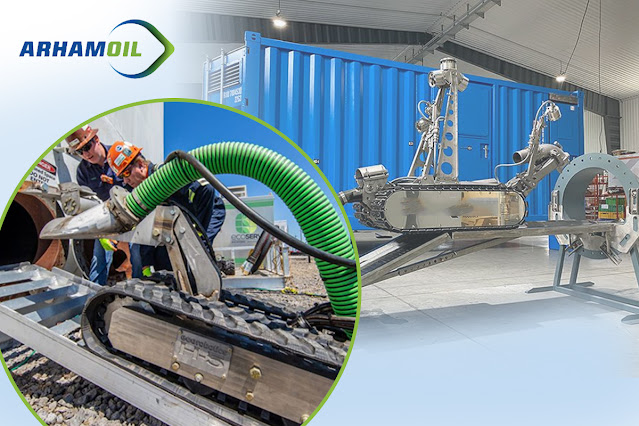Revolutionizing Industrial Maintenance: Robotic Tank Cleaning in India
Introduction:
In the rapidly evolving landscape of industrial maintenance, robotic tank cleaning has emerged as a cutting-edge solution, revolutionizing the way industries manage their cleaning processes. In India, where various sectors rely heavily on tanks for storage of liquids and chemicals, the adoption of robotic tank cleaning technology is gaining momentum, offering efficiency, safety, and cost-effectiveness.
The Need for Robotic Tank Cleaning:
Traditional tank cleaning methods are often labor-intensive, time-consuming, and pose significant safety risks to workers due to the hazardous nature of the substances being handled. In India, industries such as petrochemicals, pharmaceuticals, and food processing face challenges in maintaining hygiene and safety standards during tank cleaning operations.
Robotic tank cleaning addresses these challenges by providing a solution that minimizes human involvement, reduces downtime, and enhances overall safety. The need for such advanced cleaning technologies has become more pronounced in the wake of stringent environmental regulations and increasing demands for operational efficiency.
Key Advantages of Robotic Tank Cleaning:
1. Safety First:
- Robotic tank cleaning eliminates the need for human workers to enter confined spaces, reducing the risk of accidents and exposure to hazardous substances.
- Remote operation allows operators to control the cleaning process from a safe distance, ensuring personnel safety.
2. Efficiency and Speed:
- Automated robotic systems can clean tanks more quickly and efficiently than manual methods, leading to reduced downtime for industrial operations.
- Precision in cleaning ensures a thorough removal of contaminants, maintaining the integrity of stored substances.
3. Cost-Effectiveness:
- While the initial investment in robotic tank cleaning technology may be significant, the long-term cost savings in terms of reduced labor, downtime, and maintenance outweigh the initial expenses.
4. Environmental Compliance:
- Robotic cleaning systems are designed to minimize waste generation and adhere to environmental regulations, making them an eco-friendly option for industries.
5. Customization and Adaptability:
- Robotic tank cleaning systems can be tailored to meet the specific requirements of different industries, adapting to various tank sizes, shapes, and types of contaminants.
Challenges and Future Outlook:
Despite the numerous benefits, the adoption of robotic tank cleaning technology in India faces challenges such as initial implementation costs, technical expertise, and the need for industry-wide awareness. However, as industries recognize the long-term advantages and regulatory pressures increase, the future outlook for robotic tank cleaning in India is promising.
Conclusion:
Robotic tank cleaning is transforming industrial maintenance practices in India, offering a safer, more efficient, and cost-effective alternative to traditional methods. As technology continues to advance, the integration of robotic systems into various industrial processes will likely become more commonplace, contributing to the overall growth and sustainability of India's industrial landscape.

Comments
Post a Comment